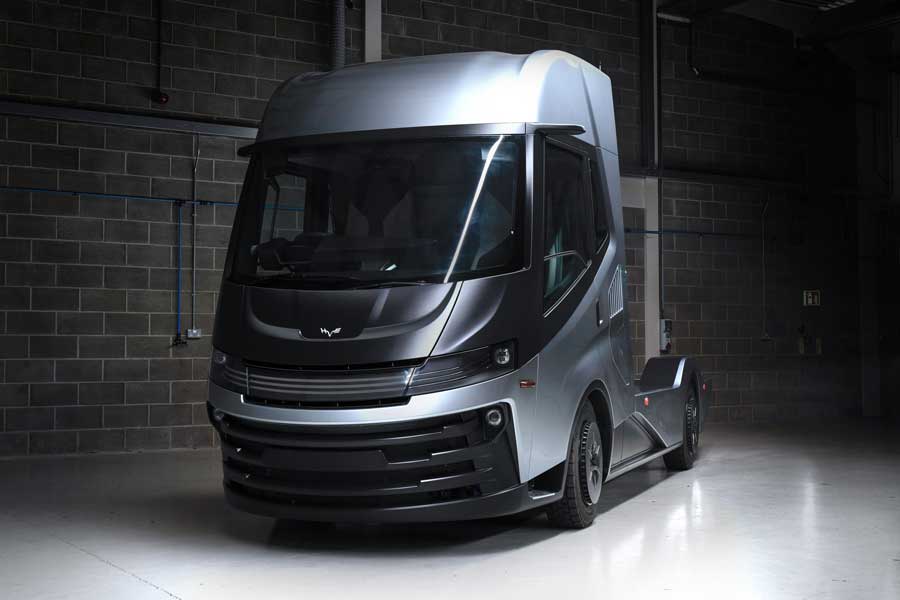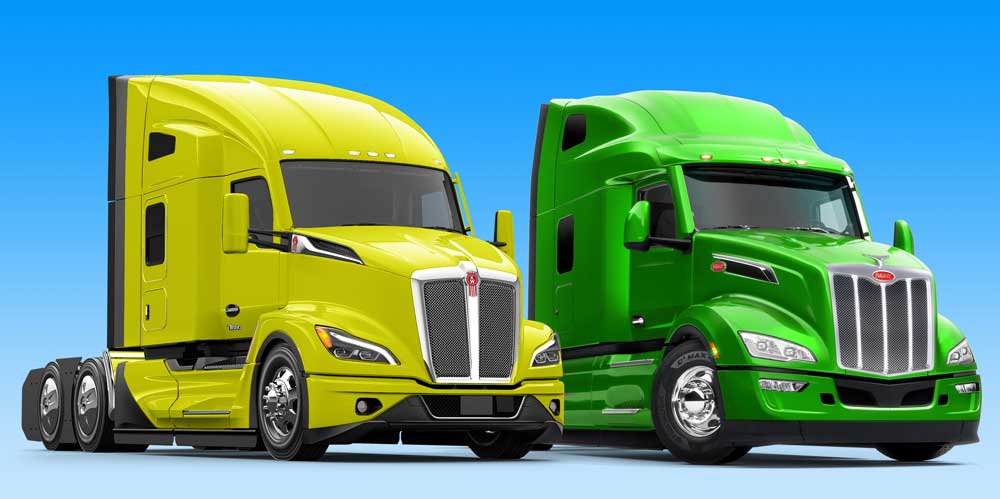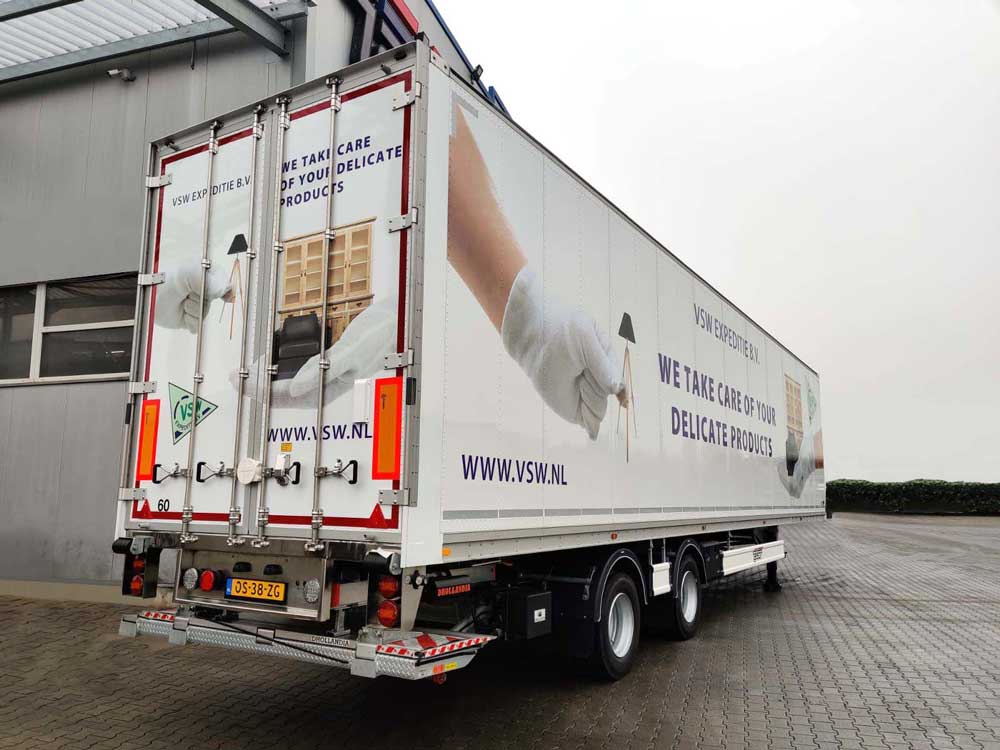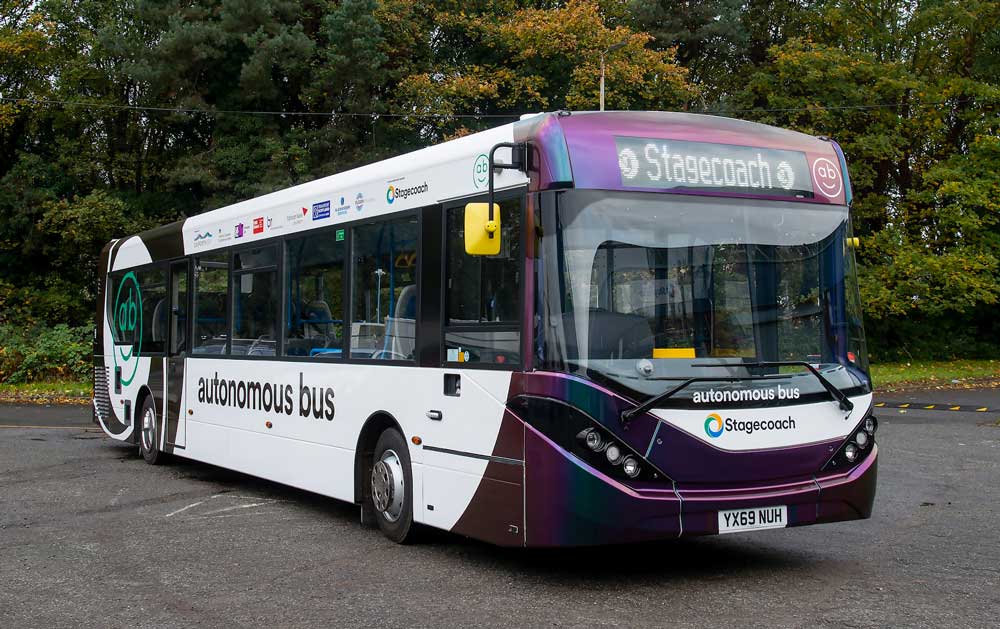Zero-emission, long-range hydrogen-powered commercial vehicle innovator, Hydrogen Vehicle Systems (HVS), has laid out its plans to disrupt the haulage industry, unveiling a clean-sheet-designed hydrogen commercial vehicle.
Showcasing its game-changing hydrogen powertrain in the form of a 5.5-tonne technology demonstrator, HVS offers a hint to its planned 40-tonne zero-emission HGV (Heavy Goods Vehicle), fulfilling the company’s objective of being the first indigenous UK designed and developed hydrogen-electric HGV on the market.
Founded in 2017, in Glasgow, HVS focuses on the ground-up design and development of zero-emission hydrogen-powered commercial vehicles. The company comprises industry specialists, with vast experience in the automotive, energy, hydrogen technology, power electronics, sustainability and environmental management fields.
With government targets to curtail sales of all non-zero emission 3.5 -26t HGVs set to come into play by 2035 or earlier and all sales of new non-zero emission HGVs by 2040, HVS and its world-leading technology have the potential to play a crucial role in allowing emissions reduction targets to be achieved.
The company also has a defined route to market. In addition to funding from Innovate UK, Scottish Enterprise and Energy Technology Partnership, HVS’ strategic investment partner is the service station and grocery corporation, EG Group, offering hydrogen refuelling infrastructure, fleet customer base and the potential for global scalability.
HVS CEO Jawad Khursheed said: “This technology demonstrator showcases our ground-breaking hydrogen-electric commercial vehicle design and advanced powertrain technology, a precursor to our HGV model. Fuelled by close-coupled green hydrogen (hydrogen produced directly by renewable energy sources such as hydro, wind or solar) our zero-emission trucks are a key part of decarbonising the logistics sector. Hydrogen is the perfect fuel for the haulage industry, offering long ranges and quick refuelling thanks to stations easily integrated into key transport networks.
“What’s more, we will supply our customers with the most advanced HGV in the sector delivering a step change in driving experience, lowest total cost of ownership and market-leading fleet management support.”
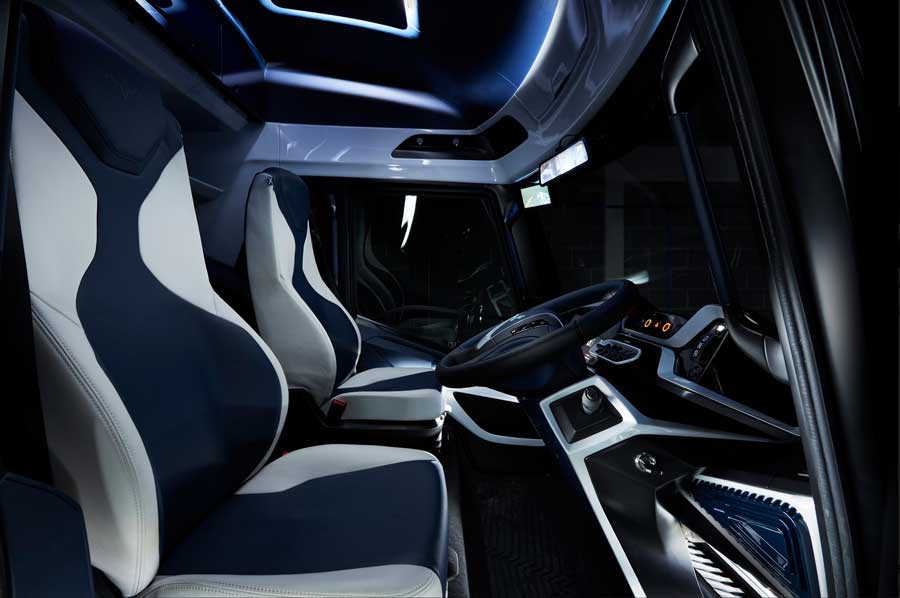
Breaking the mould
HVS tractor units will be built on an all – new chassis, designed in-house around the hydrogen powertrain, which consists of pressurised hydrogen cylinders, fuel cells, energy storage system and eAxle.
Designed in-house by Pete Clarke, Head of Design, who has a wealth of experience designing commercial vehicles that he brings to bear on HVS’ striking truck designs. The unique ground-up design brings innovation in packaging, performance, efficiency, weight, range, consumption, maintenance, and lifecycle benefits. The technology demonstrator’s unique design allows significantly improved aerodynamics compared with current ICE trucks.
Consequent benefits include enhanced fuel efficiency on long-haul runs and improved spatial ergonomics within the cab, including better access and more room at the controls, not to mention sector-leading aesthetics.
Driver comfort is taken care of, and stress levels are reduced all contributing to a safer and more efficient operational experience. Confidence-inspiring too, since the driver will be well aware that he or she is abreast of the latest technology.
State-of-the-art fuel cell stack
HVS’ vehicle powertrain employs a fuel cell system and energy storage system to deploy electricity to an electric motor to transmit power to the wheels. It uses the KERS (kinetic energy recovery system) to recapture energy under braking and while the truck is slowing down.
The integrated powertrain is controlled with HVS’ advanced control system ‘SEMAS’ which will deliver class-leading fuel efficiency and durability which contributes to achieving a low cost of ownership comparable to that of current diesel-powered offerings in the market.
The fuel cell permits longer range, higher load-carrying capacity, and faster refuelling than would be possible using Lithium-Ion battery technology alone: typical refuelling time is comparable to diesel. It is in the long-distance HGV segment that hydrogen fuel cells offer the most advantages.
The only emission from the vehicle is water vapour, meaning there are no harmful green house gas emissions of any kind
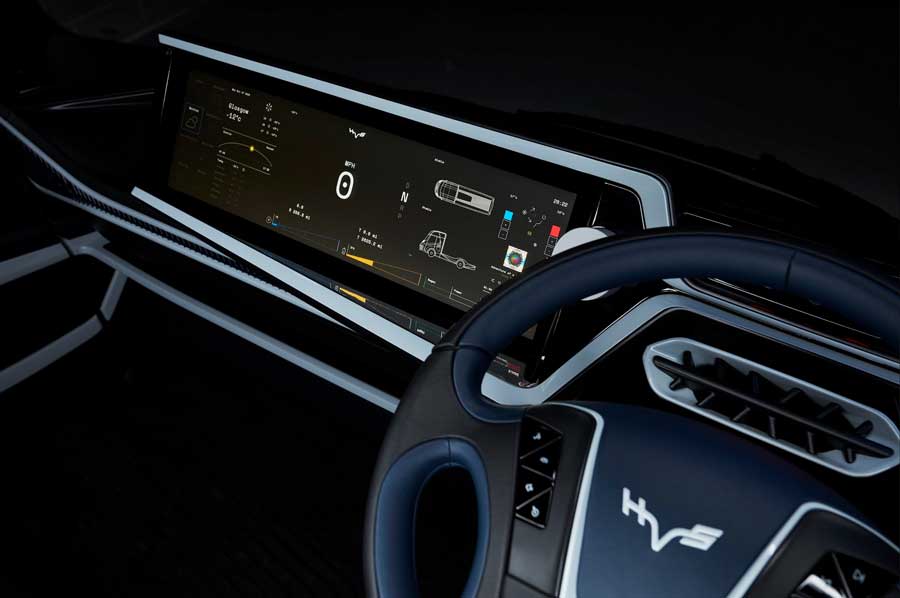
Long ranges and quick fill-ups
Depending on the journey – the route travelled, road conditions and driving style – HVS’ HGV has the capacity to cover in excess of 500km.
In pursuit of driving efficiency, SEMAS an advanced control system (monitoring interactions between driver and control systems) is in development. SEMAS will significantly reduce fuel consumption, extending range.
Hydrogen-powered vehicles don’t need charging like a battery-powered EV. They are refuelled with hydrogen gas, stored at pressure in hydrogen cylinders. Refuelling takes a much shorter time than charging an equivalent battery vehicle and is comparable to filling a truck with diesel. Many hydrogen fuelling stations will be located at existing gas stations, using dispensers that look very similar to conventional petrol and diesel ones, but with a different nozzle.
Location, location, location
HVS is Headquartered in Glasgow, Scotland, and is undertaking development work at Horiba MIRA, Nuneaton, Warwickshire. HVS envisages that it will open an R&D, engineering and pilot production facility in the Midlands, taking advantage of the region’s traditionally strong motor industry skills base, alongside a permanent UK-based production facility. A workforce of circa 600 employees is envisaged across all key disciplines, with many recruits coming from the automotive and aerospace industries. It’s likely that a further 10,000 workers will be involved in the UK supply chain, boosting the skills base.
Plans are in place for a left-hand drive variant of the hydrogen-fuelled 4×2 HGV tractor unit, with a rigid chassis model also in the pipeline.
Thanks to the fresh thinking and ground-up approach, HVS has created a HGV from the ground up that offers the complete package; from game-changing technology and driver ergonomics to easy maintenance, and lower total cost of ownership, all packaged into a striking design. EG Group’s investment secures crucial hydrogen fuelling infrastructure and a route to market.


